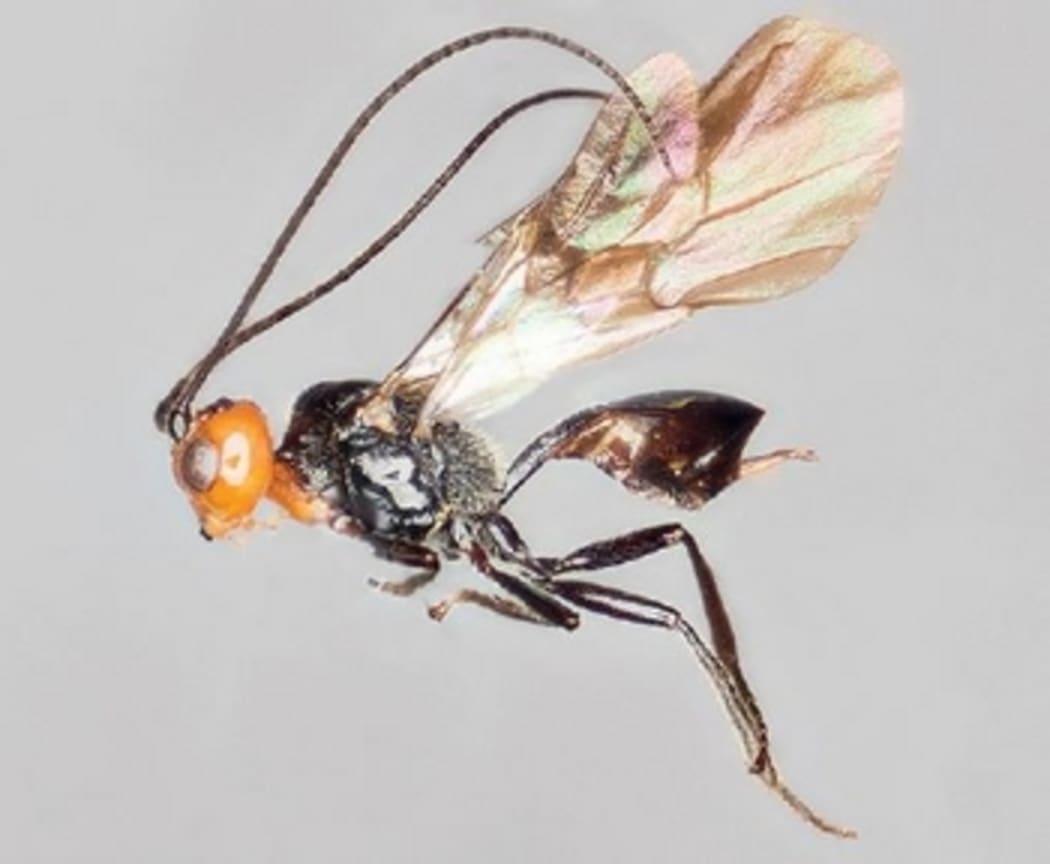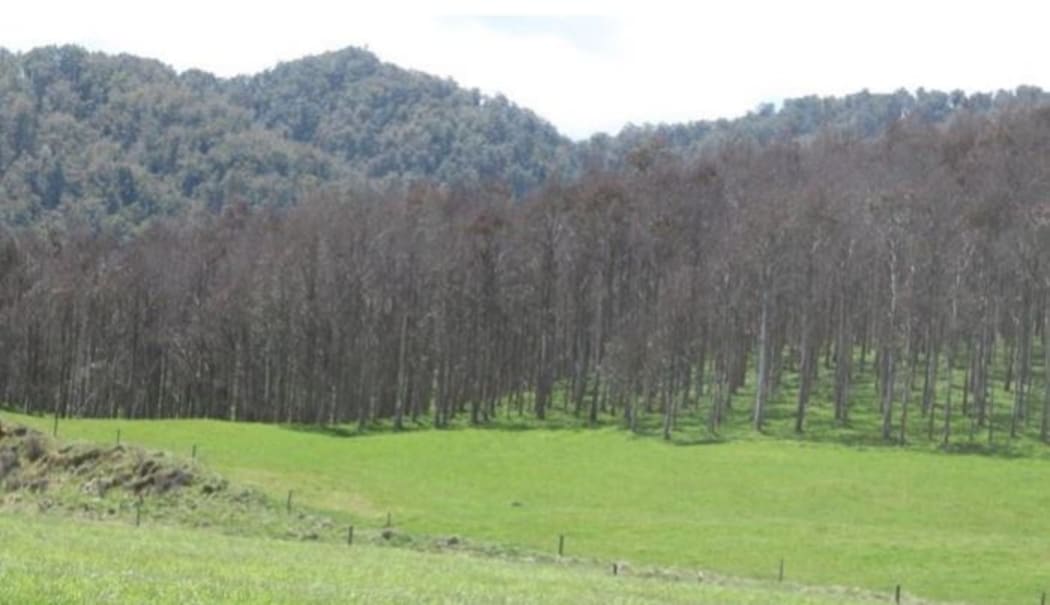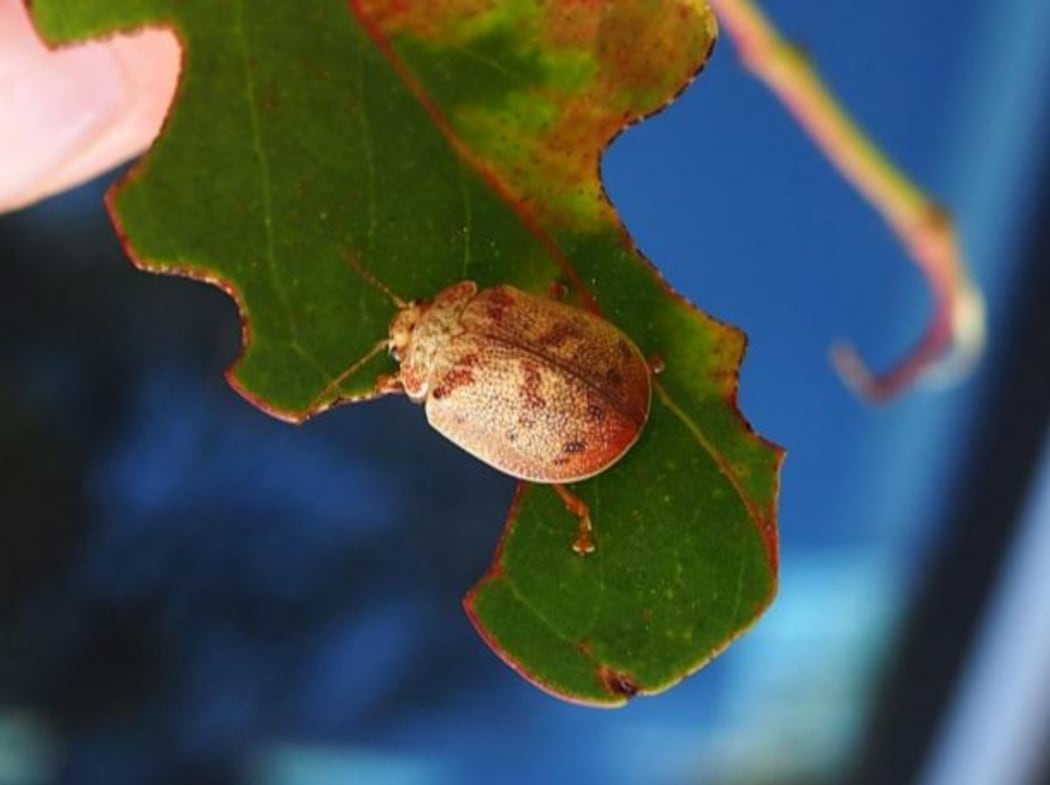Small wasps could soon be preying on leaf-eating beetles, if an application before the Environmental Protection Authority is approved.

The 1 centimetre-long wasp Eadya daenerys, which preys on the Eucalyptus Tortoise Beetle. Photo: Scion / Supplied
An application to release the wasps has been made by the forestry institute, Scion.
The wasp is a centimetre-long specimen, called Eadya daenerys.
Scion said it was not dangerous to humans but was deadly to the Eucalyptus Tortoise Beetle, or Paropsis charybdis, which ate the leaves of eucalyptus trees, stunting their growth.
At present, the beetles are controlled by aerial spraying of insecticides, at a cost of $1 million to $2.6m a year.
Scion said a biological control of the beetle could restore production losses worth worth $7.2m a year.

A Eucalyptus nitens plantation in the central North Island following more than 12 years of repeated defoliation from Paropsis charybdis. Photo: EPA / Supplied
The application was supported by the Japanese company, Oji Fibre Solutions, which superseded the old Carter Holt Harvey.
It blends fibre from eucalyptus trees with fibre from radiata pine at its plant at Kinleith, near Tokoroa.
Its products include including millions of soft but robust cartons for storage or export of apples or kiwifruit.
A hearing to consider the application was held by the Environmental Protection Authority on Tuesday.
It was due to wrap up after a day and produce its verdict later.

The Eucalyptus Tortoise Beetle, or Paropsis charybdis, which eats the leaves of eucalyptus trees. Photo: EPA / Supplied
A Scion executive, Toni Withers, said the wasp killed larvae of the beetle either by stinging them or by laying their eggs inside the body.
But the wasps would not be dangerous to humans - they would live in forests and would never even be seen by most people.
However, the proposal attracted opposition on the grounds that it was another foreign pest when there were arguably too many here already.
One critic was Gerry Te Kapa Coates of Ngai Tahu.
"The proposal introduces a pest, an exotic pest, to deal with an exotic beetle, on an exotic tree, without regard to native species," Mr Coates said.
"There could be a lot of unintended consequences for this, such as increasing the economic worth of eucalyptus at the expense of native trees."
There are over 27,000 hectares of eucalyptus forests in New Zealand at present, and it is hoped there will be 100,000 hectares by 2030.
Besides being used for fibre, the trees provide hard, rot-resistant wood for poles and posts in the ground, and can be used for flooring in houses.




